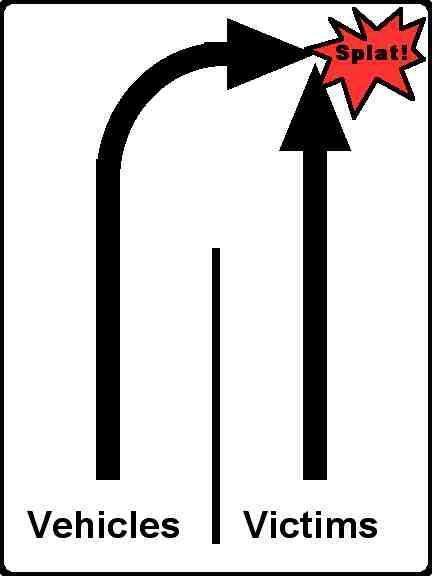At the Boston Bicycle Safety Summit, February 23, 2016, in a small breakout group, Cyclist Jonathan Traum drew a sketch like this:

(Thanks to John Schubert for this version, which looks like Traum’s, only neater.)
Traum indicated that the right-hook conflict shown in the illustration was a serious problem, with bike lanes which encourage bicyclists to overtake on the right.
MassDOT engineer Lou Rabito replied with by-the-book advice as in the AASHTO (American Association of State Highway and Transportation Officials) guide to bicycle facility design, that it isn’t OK with a right-turn-only lane, but it is OK with a lane which carries both right-turning traffic and through traffic.

Leave a Reply
You must be logged in to post a comment.